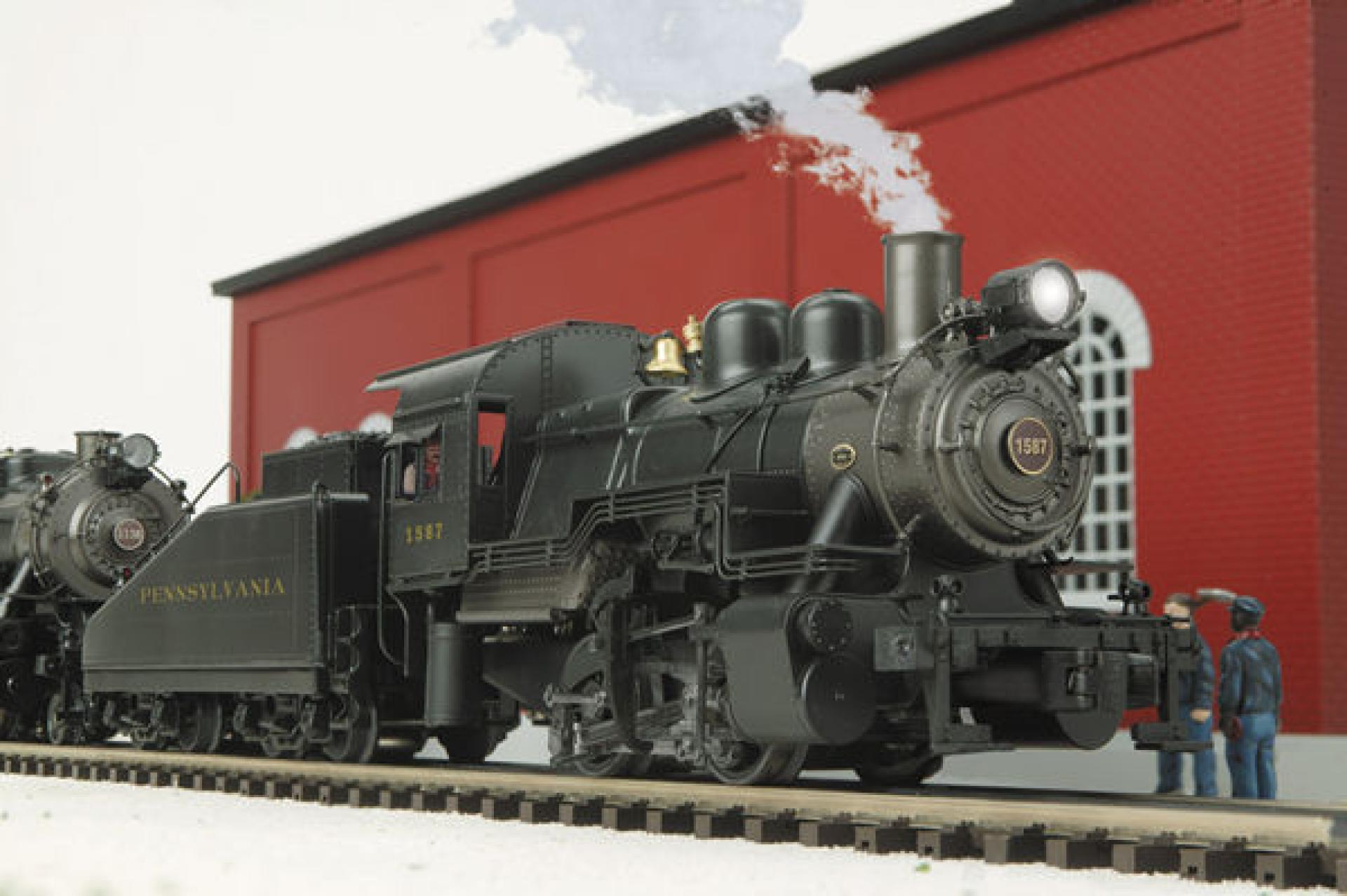Image

Pennsylvania O Scale Premier 0-4-0 A-5 Switcher Steam Engine w/Proto-Sound 2.0 (Scale Wheels)
20-3173-2
List Price:
$599.95
Roadname:
Pennsylvania
Scale:
O Scale
Product Type:
Steam Locomotive
Product Line:
Premier
Delivery Status:
Delivered DEC. 2005
Overview
By World War I the 0-4-0 wheel arrangement had largely slipped into the history books, and six-coupled steam switchers were the norm on most railroads. The self-proclaimed Standard Railroad of the World, however - stubbornly independent and known for its home-grown motive power - in 1916 began building perhaps the most modern 0-4-0's ever constructed. Built in the Pennsylvania Railroad's Juniata shops, the A5s was, in Al Staufer's words, "a junior edition of mammoth road power, having modern appliances and machinery details never associated with anyone else's 0-4-0's." The "s" in the engine's name stood for "superheater;" other modern features included Walschaert valve gear and power reverse. The characteristic large vertical tanks under the cabs of PRR switchers - or "shifters" in Pennsy parlance - were air brake reservoirs. A sloping rear tender deck allowed better visibility for backup moves, and the locomotive of course had the Pennsy's characteristic Belpaire firebox. While most A5's had cylinders that slanted inward at the top and outward toward the bottom, the last batch of six engines built in 1924 had cylinders that slanted the opposite way: outward at the top. The 47 engines in the A5s class were right at home in the narrow streets and tight corners of industrial and wharf areas, particularly in Philadelphia, New York, and Baltimore. Because they worked at slow speeds among tightly-spaced buildings, many A5's carried a fire hose in a metal box to enable them to help out in an emergency. Some were also used as yard goats to move dead engines in roundhouse areas. The Pennsylvania refurbished A5s No. 94 for its historical locomotive collection, and that shifter resides today in the Railroad Museum of Pennsylvania in Strasburg, PA. While ours is not the first A5s to grace O gauge rails, we believe it will be the most detailed, feature-laden, and smooth running model of this Pennsy shifter ever built. Researched with the help of the Pennsylvania Railroad Technical and Historical Society, the MTH A5s is based on engine number 1587 as she appeared in Atlantic City circa 1950. Despite its diminutive size, this model features the full range of Premier PS2 locomotive features, including accurate sound, synchronized puffing smoke, incredible slow speed operation, a full complement of lighting, and command control.
Features
- Die-Cast Boiler and Tender Body - 1:48 Scale Proportions - Die-Cast Metal Chassis - Authentic Paint Scheme - Metal Wheels and Axles - Constant Voltage Headlight - Die-Cast Truck Sides - Engineer and Fireman Figures - Operating Firebox Glow - Metal Handrails and Decorative Bell - Decorative Metal Whistle - Operating Tender Back-up Light - Locomotive Speed Control - Synchronized Puffing ProtoSmoker System - Precision Flywheel Equipped Motor - Proto-Scale 3-2 3-Rail/2-Rail Conversion Capable - Proto-Sound 2.0 With The Digital Command System Featuring:- Freight Yard Proto-Effects - Unit Measures:15 _" x 3 _" x 2 _" - Operates On O-42 Curves
Support
Manual:
Document
Parts:
View:
Protosound:
Document
p052pf3_a5_2r__all070115aupd.mth
(919.79 KB)
Protosound Upgrade:
Document
